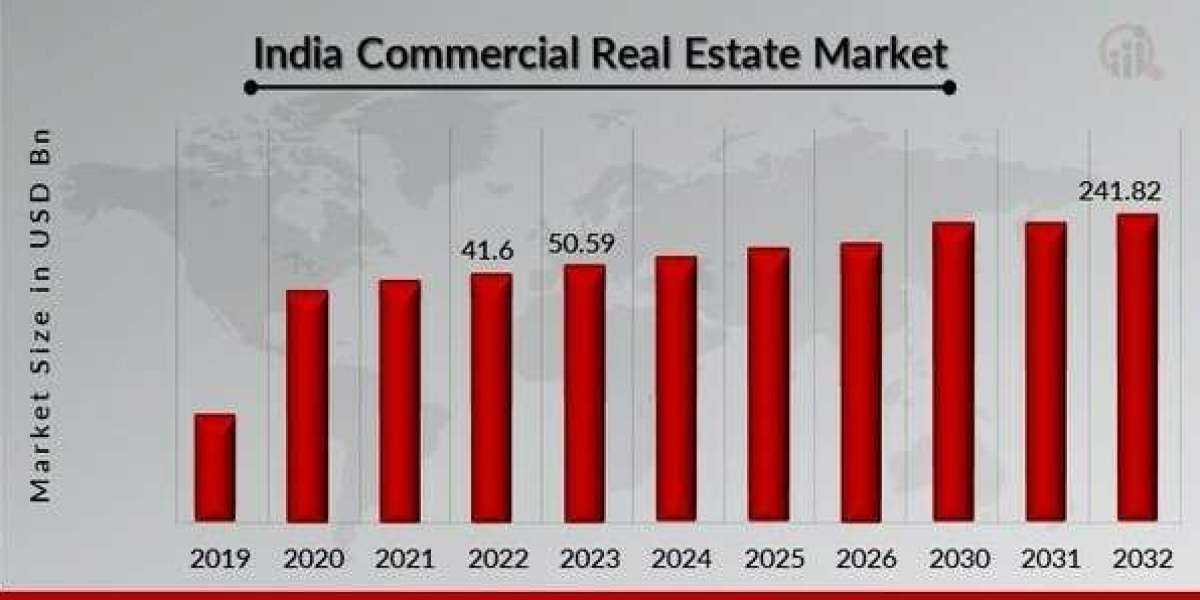The India Commercial Real Estate Market is undergoing a significant transformation, fueled by rapid urbanization, economic development, infrastructural advancements, and a growing appetite from both domestic and international investors. As one of the world’s fastest-growing major economies, India has emerged as a prominent destination for commercial real estate development across sectors such as office spaces, retail, warehousing, data centers, and co-working environments.
Over the last decade, the market has seen notable changes in investor behavior, tenant expectations, and developer strategies. The demand for premium office space continues to be a major driver, especially in metro cities like Bengaluru, Mumbai, Delhi-NCR, Hyderabad, Pune, and Chennai. These cities host thriving IT/ITES sectors, global capability centers (GCCs), financial institutions, and a burgeoning startup ecosystem, all of which have contributed to sustained leasing activity and the development of Grade A commercial properties. Multinational corporations and Indian enterprises alike are investing in modern workspaces that emphasize flexibility, sustainability, and technology integration.
The rise of hybrid work models post-COVID has not reduced the importance of physical office spaces; instead, it has redefined them. Developers are now focusing on intelligent building designs, wellness-certified workspaces, and flexible leasing options to cater to the evolving needs of corporates. Meanwhile, the co-working and managed office segment is growing swiftly, with demand driven by startups, SMEs, and even large enterprises seeking agility and cost-efficiency. Shared spaces are not limited to Tier I cities anymore but are expanding to Tier II cities like Ahmedabad, Kochi, Jaipur, and Indore, signaling a more distributed workforce pattern across the country.
Retail real estate is another key component of the commercial real estate landscape in India. Although impacted by the pandemic, the segment is showing strong recovery, particularly with the rise in organized retail and demand for experience-driven shopping environments. Malls and high-street retail spaces are undergoing revamps to include more food courts, entertainment zones, and tech-enabled services. Additionally, the entry of global retail giants and growing domestic consumption have kept the retail property segment vibrant, especially in urban centers and emerging suburban regions.
Driven by the boom in e-commerce, third-party logistics (3PL), and a push toward supply chain modernization, the demand for warehousing and logistics parks has surged. Major cities and their peripheries are now witnessing large-scale warehousing developments with Grade A infrastructure, multi-modal connectivity, and automated operations. Government initiatives like the Gati Shakti scheme and National Logistics Policy are supporting this growth by improving transport infrastructure and regulatory transparency.
Data centers have also become an emerging asset class in India’s commercial real estate market. With exponential growth in internet usage, cloud computing, and digital transformation across sectors, the need for high-quality data center infrastructure is rising. Metro cities and technology hubs are seeing increased investments from both domestic developers and global hyperscalers, signaling a new wave of commercial real estate expansion focused on digital infrastructure.
The real estate investment trust (REIT) model has played a pivotal role in institutionalizing the Indian commercial real estate sector. India now hosts several successful publicly listed REITs that offer investors access to rent-yielding commercial assets. This has enhanced transparency, improved governance, and attracted global investment into the sector. The rise of REITs has also encouraged developers to build quality, lease-generating assets to align with REIT standards.
Regulatory reforms such as RERA (Real Estate Regulation and Development Act), GST, and the ease of doing business have further strengthened investor confidence in India’s real estate landscape. These reforms have promoted accountability, streamlined the approval processes, and enhanced the credibility of the sector.
One of the fastest-growing sectors within India’s commercial real estate is industrial and logistics. International investors and private equity firms now view Indian commercial real estate as a stable and long-term investment opportunity.
From a sustainability perspective, green buildings and energy-efficient practices are becoming integral to new developments. Developers are increasingly opting for LEED and IGBC certifications, solar power integration, water conservation systems, and smart energy management to align with global environmental standards. This trend not only reduces operational costs for occupants but also improves marketability to ESG-conscious investors.
Looking ahead, the future of the India commercial real estate market appears promising, backed by favorable demographics, technological adoption, policy support, and continued economic growth. As cities expand and Tier II and Tier III urban centers become more prominent, the scope for commercial real estate development is expected to widen. The market is transitioning from a traditionally fragmented sector to a more organized, transparent, and professionally managed space, creating opportunities across the spectrum—from developers and investors to occupiers and service providers.



